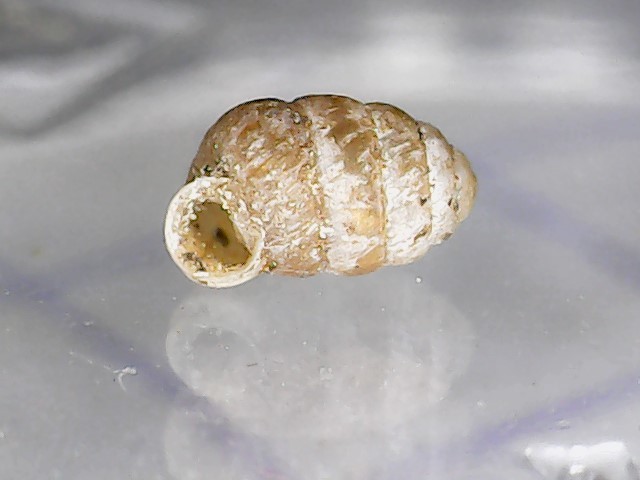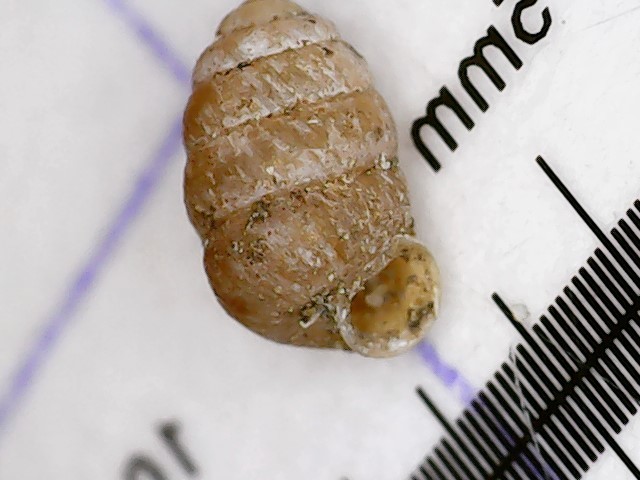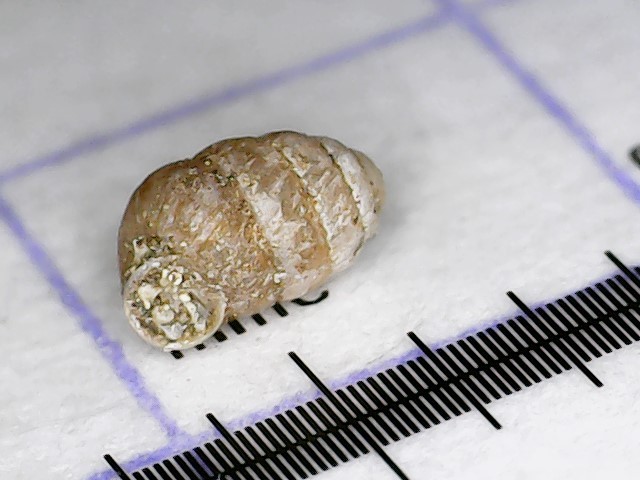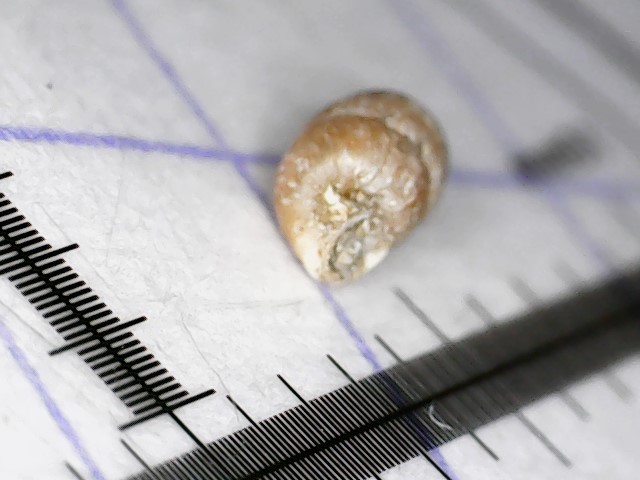



Image Usage Information
Family: Pupillidae
Common name: Widespread Column
Discovery: Linnaeus, 1758
Identification
Height: ~3.6 mm
Width: ~1.7 mm
Whorls: 6-7
This species is easily distinguished from all other pupillid land snails in the region by having a shell that is relatively large (more than 3.5 mm tall), dark reddish-brown in color, and columnar in shape
Ecology
Occupied habitats differ greatly between populations restricted to these two distribution centers. Northern and Western populations occur in undisturbed native habitats on bare soil, under stones, on turf, in thin leaf litter accumulations on sandy or rocky shorelines, and in tundra (Nekola & Coles, 2010). In the western mountains it also commonly occurs in rocky woodland and sandy riparian forest. East-central North American populations, however, are generally limited to human-disturbed habitats such as road verges, vacant lots, abandoned quarries, old fields, and concrete culverts (Hubricht, 1985). Less-disturbed carbonate cliff, glade, and grassland sites are also occasionally used.
Taxonomy
Given the differences in ecology, it is not surprising that DNA analysis documents that multiple species are present in North America under the umbrella of “P. muscorum.”The east-central North American populations are introduced European animals referable to true P. muscorum (Nekola et al., 2009; von Proschwitz et al., 2009). In fact, the genetic haplotype found around Cedar Rapids, Iowa — a region with a sizeable population of Czech immigrants — is identical to that occurring around Brno in the eastern Czech Republic (Nekola, unpublished data). The northern and western populations, however, represent one or more undescribed native North American species, distantly related to the Eurasian Pupilla alpicola (Nekola, unpublished data). Additional research is needed to sort out the taxonomy of these animals.
Distribution
Historically, P. muscorum was considered to have a Holarctic distribution, ranging across middle and northern latitudes of both Eurasia and North America. In North America two distinct ranges were apparent: One set of populations ranged from Alaska to Newfoundland and south down the Rocky Mountains to Arizona and New Mexico. The second set was restricted from eastern Iowa and the western Great Lakes states east to the Atlantic seaboard (Oughton, 1948; Pilsbry, 1948).
In Virginia, all populations represent naturalized European P. muscorum. While currently reported only from the far north of the state, more should be expected from disturbed, calcareous habitats in the central and northern mountains, as well as the Washington, DC metroplex.
Conservation
NatureServe Global Rank: G5
NatureServe State Rank: S1 (but introduced)
Virginia’s wildlife action plan: Tier IV
